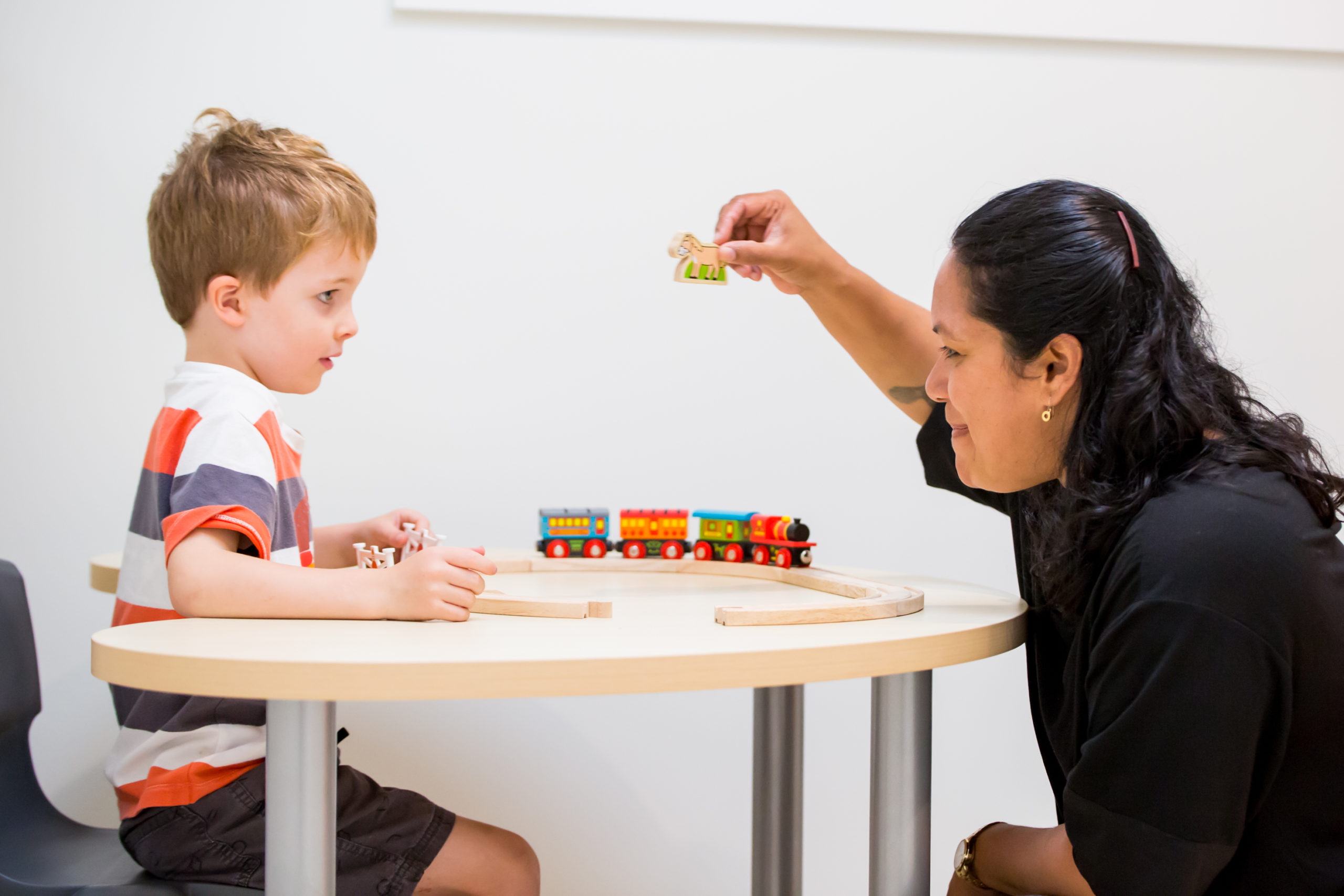We are often asked how the Early Start Denver Model (ESDM) differs from Applied Behaviour Analysis (ABA). Here are some short points on some of the core similarities and differences between ABA and ESDM.
Key Similarity: ABC learning (Antecedent, Behaviour, Consequence)
ABA is at the foundation of the ESDM as they both involve implementing behaviour learning therapy. There are three components to learning in each approach. The therapist provides an antecedent (we ask for a behaviour). Also we gain a behaviour (the child does what we asked of them). And we provide a consequence for the behaviour when it was completed correctly (a reward).
However, how the components to learning are implemented differ in each approach.
Key Difference: Rewards
In ABA, tangible rewards are often used as a consequence in response to correct behaviours. This could include stickers or food rewards for performing a behaviour.
In the ESDM, we use social rewards such as praise (positive reinforcement) and positive affect (smiles and warm tone of voice), and motivational rewards such as allowing the child to choose which toy or experience they want to do.
Giving children choices and following their lead also allows them to feel intrinsically motivated and valued, resulting in longer-lasting behaviours. Providing social rewards and recognitions also allows children to better adapt behaviours to different contexts. And to generalise skills in different conditions and with different people. They won’t be waiting for that tangible reward or frustrated when they don’t receive it.
Key Difference: Adult Led vs. Child Led
Often in ABA, experiences are adult-led and adult chosen. So whereas in the ESDM we follow the child’s lead and allow children to make choices. What they want to do each session. We believe this maximises children’s motivation and enjoyment to play and learn with you.
Key Difference: Neutral Affect vs. Positive Affect
In the ESDM and at the Child Development Institute, we focus on our positive affect (that’s a warm tone of voice, facial expression and body language) in all interactions with children. We value the importance of relationships and attachment building.
In ABA, antecedents are often delivered with a ‘straight face’, and positive affect is only offered once the behaviour has been shown.
Key Difference: Managing Unwanted Behaviour
Often in ABA, any unwanted behaviour the child is exhibiting is ignored.
In the ESDM and at the Child Development Institute, we focus on our responsivity and sensitivity with children, and we also value emotion coaching. This might mean labelling the emotion the child might be feeling and providing strategies to help them problem-solve so that the child can learn to co-regulate. We always try to determine what is causing the distress or whether the behaviours are attention-seeking, and we moderate our technique depending on each situation. We look to the underlying communication each time, and we try to meet that need and reduce future occurrences of unwanted behaviours. Because our therapists build relationships with the children and strive to be in tune with their needs, we see very few occurrences of unwanted behaviours in any of our ESDM sessions.
If the child is distressed or not responding to the therapy in the ESDM, we take a step back as therapists and teachers, and we reflect on how we can make this more fun, more interesting, and more engaging to this individual child. Our goal is for them to want to learn new skills because it’s fun.
Key Difference: Prompting
In ABA, therapists will perform most to least prompting, whereas in the ESDM, we use least to most prompting.
In the ESDM, this means that when we provide an antecedent to a child (“give me yellow?”) we provide the least amount of support for that child to show us the behaviour (giving us yellow) working up to more support (helping them give the yellow object to us with hand over hand).
In ABA, a therapist will provide an antecedent (“give me yellow”) and then will take the child’s hand to entirely prompt the response (prompted to give yellow correctly the first time).
In the ESDM, we believe that by giving children every opportunity to show us the skill before increasing prompting, we maximise the child’s chance to understand the request, perform the action, build independence, and build confidence.
The ESDM approach also involves aspects of Pivotal Response Training and the earlier Denver Model of therapy. These approaches recognise that children in natural and interactive settings, rather than adult-led settings are:
- Better motivated
- Better engaged with the adult
- Achieve more spontaneous learning
- Better able to generalise skills into different settings
The ESDM is also in line with current research that explores the power of play for children’s learning . And motivation and research that shows how children learn in the context of relationships.
I will concede that each private institution may vary in the way they deliver and implement each approach. Both therapies have a place in early intervention. Every child is different and has different needs, and thus will respond to different therapies and approaches.
Written By: Kahlia Pettersen – ESDM Therapist, Early Childhood Teacher,







